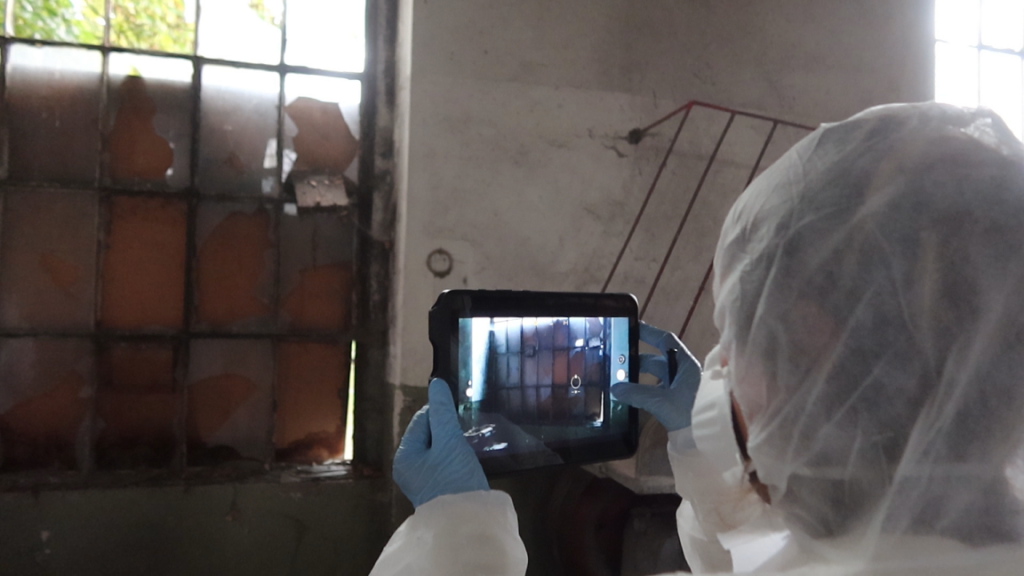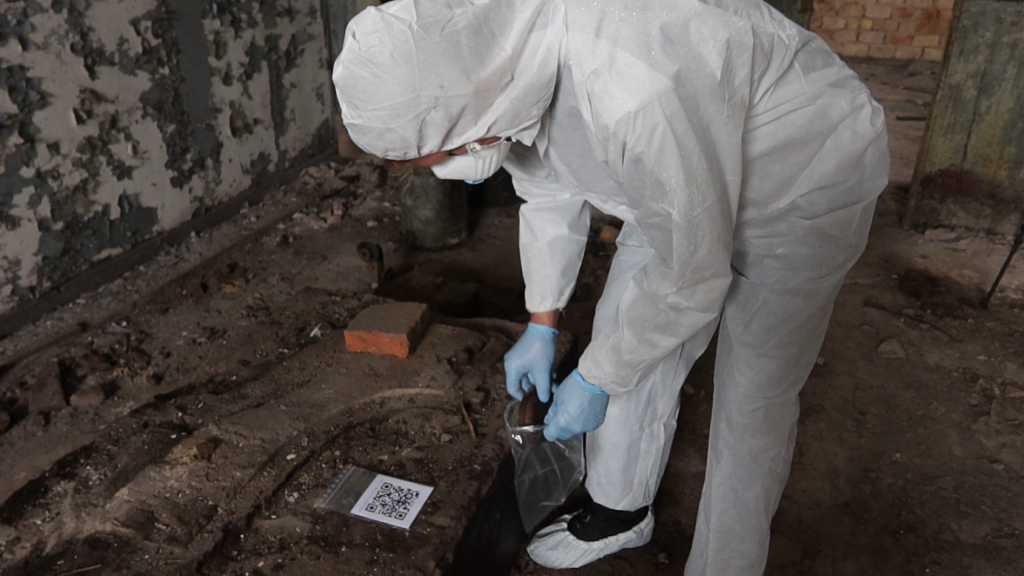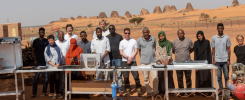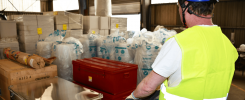Dipl.-Ing. Tobias Busen, building historian and ArcHerNet coordinator, and the archaeologist and IT specialist Dr. Bernhard Fritsch (KulturGutRetter, DAI) speak together in the interview below about digital apps that are developed within the KulturGutRetter project for safeguarding cultural property during crises.
“KulturGutRetter– An Emergency Mechanism for Cultural Heritage in Crisis Situations” is a project under development at the German Archaeological Institute (DAI) in collaboration with the Leibniz Center for Archaeology (LEIZA) and the German Federal Agency for Technical Relief (THW) with support from the Archaeological Heritage Network (ArcHerNet). KulturGutRetter’s Cultural Heritage Rescue Unit (CHRU) is intended to be deployable all over the world whenever cultural assets are put at risk in a crisis. The KulturGutRetter team tested the documentation of objects of cultural heritage with digital applications in cooperation with experts and students of the Technischen Universität Berlin (TU).
Mr. Busen, the Cultural Heritage Rescue Unit is currently still being developed. But how would the team prepare for deployment in an emergency?
Tobias Busen: Before the unit arrives at the place of deployment, we can use the time to do some preliminary preparation. That means we collect all the available data, for instance photos of the affected building, the ensemble or the museum collection. Using remote sensing technology we try to get other information about the deployment location. And we gather all the information about the heritage building itself, what it contains and any possible interior furnishings that might be damaged; and of course architectural plans, too, which are very important to us in a rescue operation, especially when it comes to mobile apps.
What would happen when the Cultural Heritage Rescue Unit arrives at the site?
Tobias Busen: When a building is in danger, that means in the first instance that our experts are in danger too. The very first thing to do, therefore, would be to check if the building is safe to enter and not about to collapse. Once that has been established, it’s very much a matter of what information is at our disposal about the building. For example if we’ve got no architectural plans, we have to produce our own material on the building. That can range from a simple sketch with manual measurements to surveying by means of laser scanner or photogrammmetry.
How important are digital apps in the development of the KulturGutRetter rescue mechanism?
Bernhard Fritsch: Digital apps are very important for us to record and then process big quantities of data. We use two apps, iDAI.field and Qfield. They are apps that allow you to record data in the field very quickly and efficiently. An additional advantage is that you get highly structured data that allows easy synchronisation between data sets and also with other apps. The same apps can be used both for movable cultural assets and immovable cultural assets, as all apps are based on data models that have been developed for the purpose as part of the KulturGutRetter project. The data can therefore be linked with the information that we need. Both apps are open source. That makes it possible to process and work with the data at a later stage using other apps.
What possibilities are offered by the iDAI.field app when it comes to documenting immovable cultural assets?
Tobias Busen: The iDAI.field programme was developed in house by the DAI, actually for archaeological field work, and now it is being adapted by our colleagues in the IT section to respond flexibly to the needs of the Cultural Heritage Rescue Unit. As far as immovable cultural assets are concerned, we have two requirements. Firstly, we want to document the damaged cultural property in its condition at the point in time when we are there on site. After all, we can be dealing with buildings that have never been fully documented before. Secondly, we want to identify, document and assess the damage in order to take immediate measures to save the damaged parts in case that’s required.

And how is the Qfield app used?
Bernhard Fritsch: With Qfield it’s possible to record spatial data very exactly. That means that movable objects as well as structures like walls and buildings can be precisely geolocated and pinpointed on maps that are integrated in the app. We can also annotate the objects, that is, supply information relating to a particular building.
Tobias Busen: That’s right. It’s very important that, on this basis, the condition is documented, whether by photos or descriptions, though reduced to a minimum. The identified damage must then be mapped and evaluated, so that the next steps can be taken.
When a museum is at risk, for example, objects from the collection are salvaged. How can the digital apps help there?
Bernhard Fritsch: Thanks to the digital apps it is possible to track the position of the objects and their status. That means we always know where the objects are located, where they came from and whether for example they have already been photographed, cleaned, undergone emergency conservation or been put in protective boxes. That can be done, for instance, by means of a QR code that’s attached to every object.
It no doubt takes some time to get used to working with this sort of specialised app. Who uses the software?
Bernhard Fritsch: In fact the experts from the rescue unit should use the software and should be well acquainted with it. But also the software has been designed in such a way that local personnel and helpers, after a little training, should be able to record data efficiently in a salvage operation.

What happens to the data that is collected?
Tobias Busen: By the time the rescue and salvage operation is finished, we have produced an enormous amount of structured data about the cultural asset concerned, whether it’s a collection or a building or both together. Just like the cultural asset itself, this data also belongs to the country concerned or the institution concerned; and naturally we hope, when we hand over the data at the end of an operation, that it will be incorporated into existing data structures and will thereby be able to contribute to the long-term care and maintenance of the cultural asset. The data can also serve as the foundation for a new digital inventory or archive of the collection or the building ensemble. And of course we hope that in the process we can do our bit for the protection and preservation of cultural heritage in crisis situations around the world.
Mr. Busen, Dr. Fritsch, thank you!
Das Gespräch führte: Eva Götting-Martin
Titelbild: Per Tablet oder Smartphone dokumentiert das Team der KulturGutRetter das gefährdete Baudenkmal | Foto: Eva Götting-Martin.


